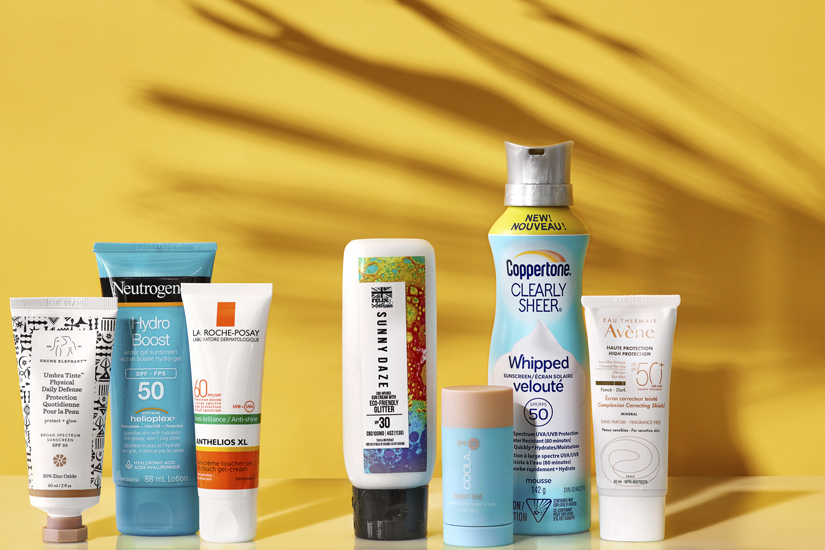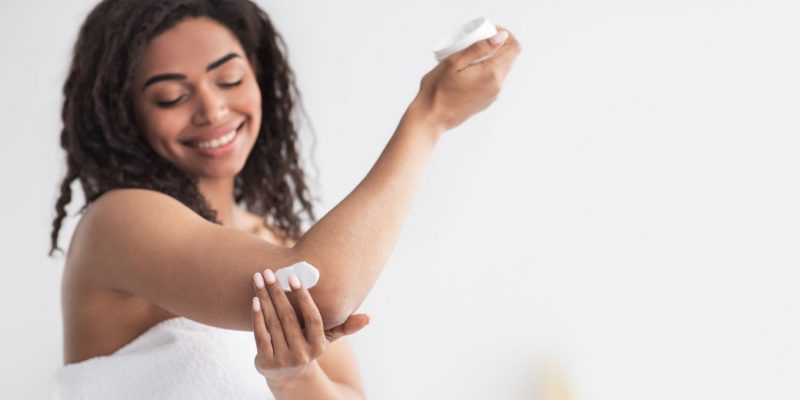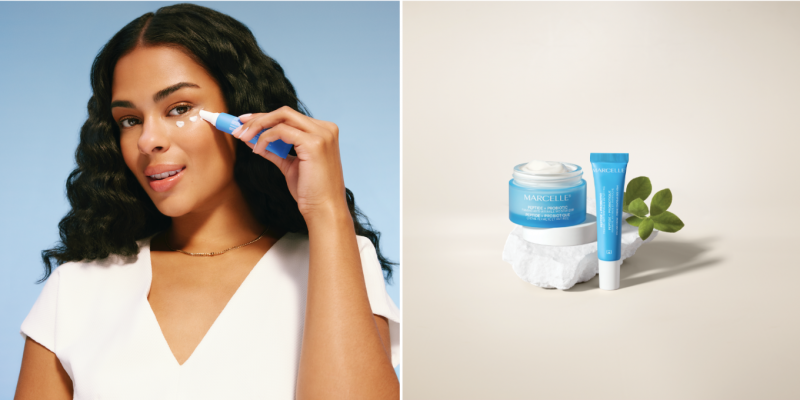Skincare
The Most Innovative Sunscreens Out Right Now
New textures, ingredients and skincare benefits: The latest sunscreens all have a side hustle.
by : Sarah Daniel- Jun 6th, 2018

While modern skincare has come to mirror our multi-tasking lives, with products promising to do everything from hydrate and correct to brighten and blur, sunscreens have traditionally stayed in their lane, focusing on doing one thing well: protecting skin from UV rays. But a new generation of sunscreens is offering more than just SPF.
“A few years ago, we saw the growth of alphabet creams like BB and CC creams, which provide countless skincare benefits, and now we’re seeing some of those trends in the sunscreen category,” says Amy Chung, Canadian beauty industry analyst for NPD Canada.
Take Drunk Elephant Umbra Tinte Physical Daily Defense: A physical block, it packs 20-percent zinc oxide (rather than chemical filters), an applause-worthy number considering that its texture is pleasant and it imparts a dewy sheen. But it also features moisturizing, omega-rich marula oil and star antioxidants like astaxanthin, which prevents oxidative damage, and grape-juice extract, which reduces redness.
Or there’s Avène Complexion Correcting Shield, infused with hydrating ceramides as well as tiny light-diffusing pearls that blur imperfections. And oily-skin types will appreciate La Roche-Posay Anthelios XL Dry Touch, a gel-cream that minimizes pores and mattifies skin—a welcome departure from shine-enhancing greasy sunscreens.
Try: Drunk Elephant Umbra Tinte Physical Daily Defense SPF 30 ($44); Neutrogena Hydro Boost Water Gel Sunscreen SPF 50 ($20); La Roche-Posay Anthelios XL Dry Touch SPF 60 ($29)
One of the trickiest things to get right about sunscreen is the texture—often chalky and sticky, it can put off even the most committed user.
“The biggest hurdle is aesthetics,” says Naomi Furgiuele, vice-president of Global Beauty R&D, Face & Sun Care at Johnson & Johnson. “They don’t want it white, and they don’t want it smelly,” she says, citing feedback from a sunscreen study the company conducted before developing Neutrogena Hydro Boost Water Gel Sunscreen SPF 50, which couldn’t feel more different from the sunscreens of the past.
There’s also Coppertone’s Clearly Sheer Whipped Sunscreen SPF 50, which spreads on skin smoothly, much like the creamy dessert topping it conjures up, and disappears almost immediately.
Try: Felix & Ambrosia Sunny Daze CBD Sun Cream SPF 30 ($14.50); Coola SPF 50 Mineral Sport Sunscreen Stick ($39); Coppertone Clearly Sheer Whipped Sunscreen SPF 50 ($10); Avène Complexion Correcting Shield SPF 50 ($35)
Trending ingredients (and topics) are also influencing sunscreen formulation. Sunny Daze CBD Sun Cream, from British brand Felix & Ambrosia, features industrial-hemp-derivative CBD oil (known for its anti-inflammatory properties) and glitter—the shimmering flecks come from plant cellulose, which naturally biodegrades, instead of the usual microplastics.
When we’re not soaking up the sun outside, we’re soaking up blue light from our computer and phone screens, which is believed to accelerate aging and damage skin.
Known as high-energy visible light (HEV), it’s something skincare brands have already started to address. Sunscreen pioneer Coola recently launched Sun Silk Drops (in the United States—the Canadian launch will be next summer), which feature SPF and “patented ingredients specifically for HEV, infrared-light and broad-spectrum-UVA and -UVB protection,” says founder and CEO Chris Birchby, noting that these blue-light blockers will start to make their way into many of the brand’s other formulas.
This new issue of screen time echoes what dermatologists have been telling us for years: Protecting our skin is a full-time job. And now, thanks to these new textures and cutting-edge formulas, there are no excuses for skipping sunscreen.
DON’T FORGET YOUR LIPS
A quick look at a woman’s neck and hands can telegraph how much time she has spent in the sun over the years. But our lips say a lot too, especially because we often overlook them when we apply sunscreen. “Lips get a lot of sun exposure because they are right in the middle of the face,” says Dr. Ingrid Jarvis, a dermatologist at Toronto’s SpaMedica. “The skin is also very thin and has less melanin, which protects skin from sunlight.” This makes lips more prone to skin cancer, and sun damage also depletes collagen, which can cause fine lines to form around the mouth.
Try: Fresh Sugar Punch Lip Treatment SPF 30 ($29); Shiseido UV Lip Color Splash SPF 30 ($30); Eos Active Protection Lip Balm SPF 30 ($4).
DOUBLE UP ON SUN PROTECTION WITH THESE OPTIONS
There’s more than one way to get your SPF, so why not layer it on like you do with skincare?
Bend Skincare Anti-Aging Formula ($80) supplements deliver some extra UV protection thanks to antioxidants zeaxanthin and lutein, which neutralize free radicals generated by sun exposure.
After you’ve applied foundation, mist Kate Somerville UncompliKated SPF Soft Focus Makeup Setting Spray SPF 50 ($62), which is infused with hydrating hyaluronic acid.
When reapplying sunscreen every two hours isn’t possible, Colorescience Sunforgettable Brush-On Sunscreen SPF 30 ($73) delivers protection in mineral-powder form for touch-ups throughout the day.
On their own, these products aren’t enough to protect you from the sun—you still need to wear a broad-spectrum sunscreen with a minimum of SPF 30 for that, says Dr. Nowell Solish, a Toronto-based cosmetic dermatologist. But consider these your little UV-ray insurance policies.
This article originally appeared in the Summer 2018 issue of ELLE Canada.
Newsletter
Join our mailing list for the latest and biggest in fashion trends, beauty, culture and celebrity.
Read Next

Fashion
Are Fashion Brands Getting Greener?
While the fashion industry is making a lot of noise about being more sustainable, a closer look shows that its earth-friendly commitments are often more illusion than reality.
by : Marouchka Franjulien- Apr 19th, 2024

Beauty
What Beauty Packaging Is Actually Sustainable?
We sought out leaders in the field to help us get to the bottom of the blue bin once and for all.
by : Victoria Christie- Apr 19th, 2024

Beauty
Tested and Approved: A Skin Saviour That Works While You Sleep
Wake up with your glowiest skin yet—even if you didn’t clock eight hours.
by : ELLE Canada- Apr 11th, 2024




